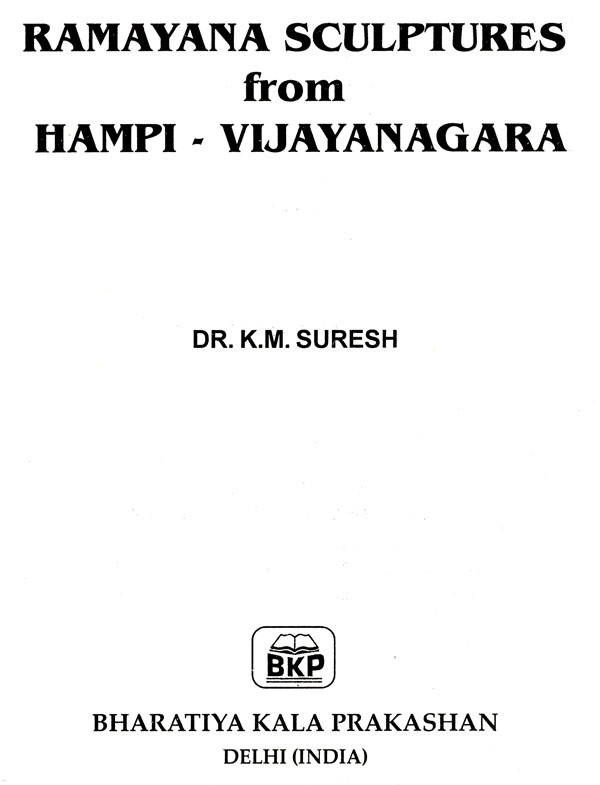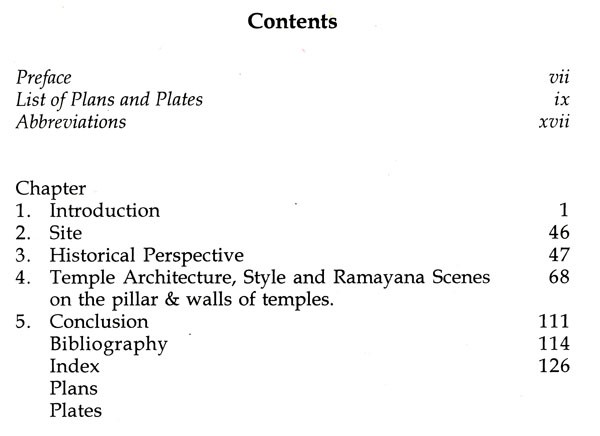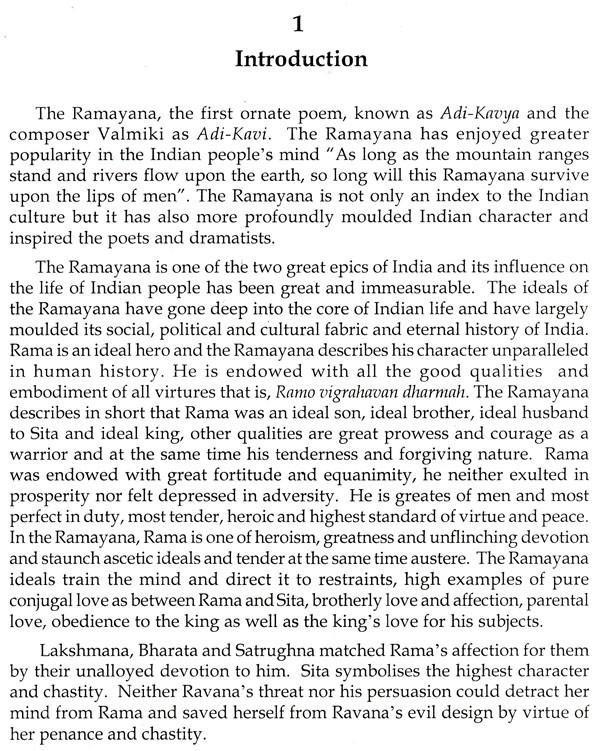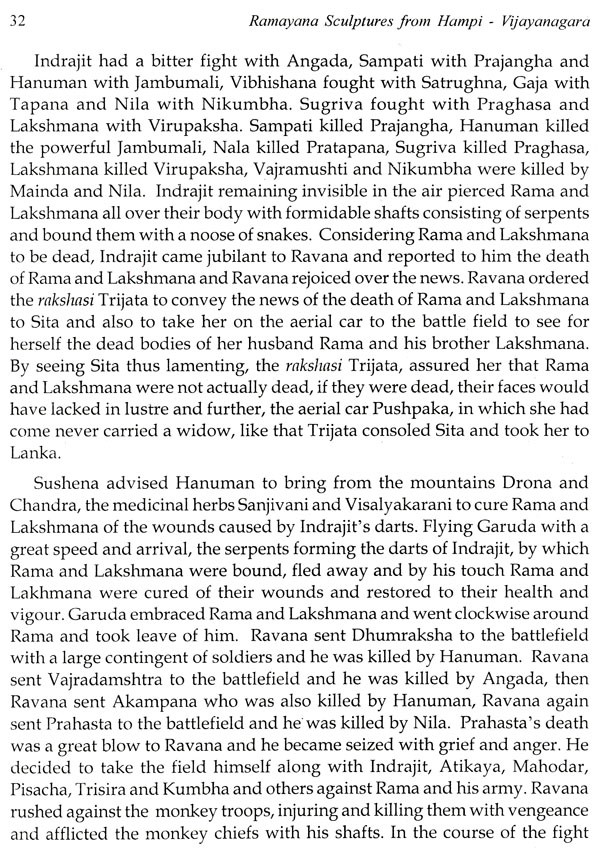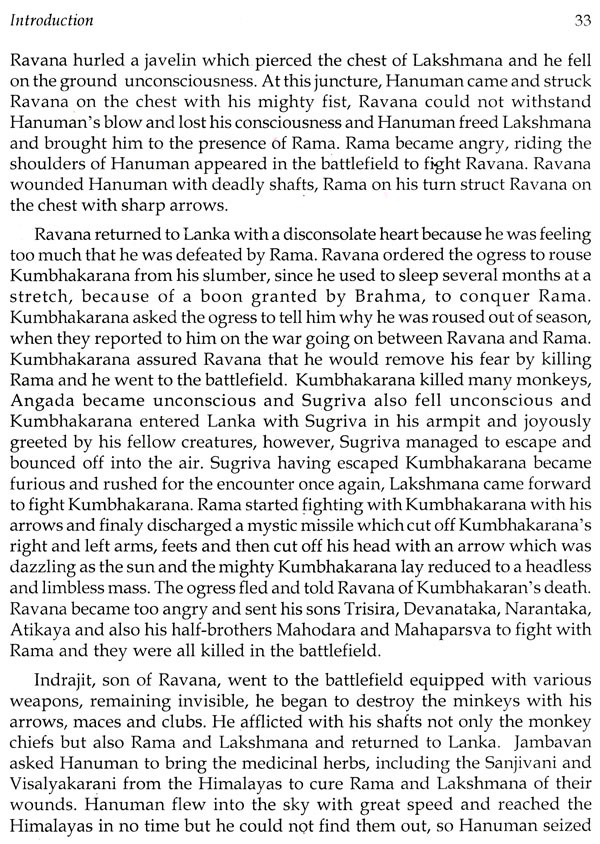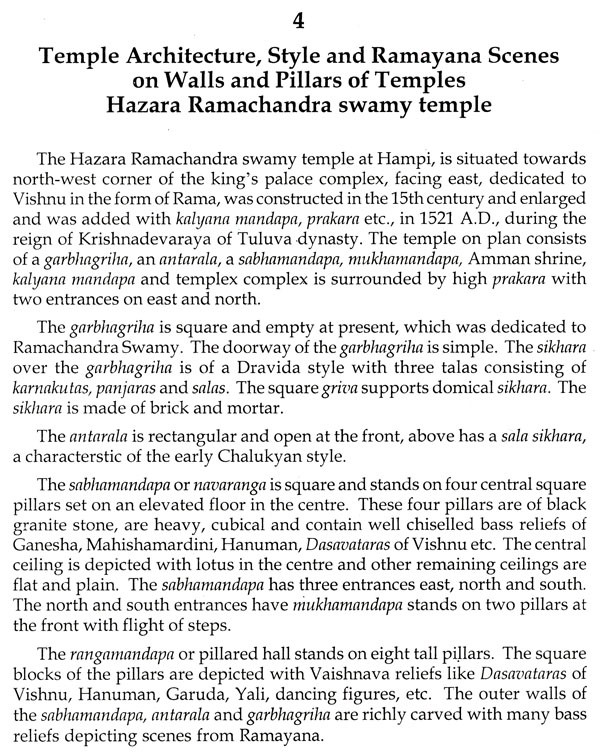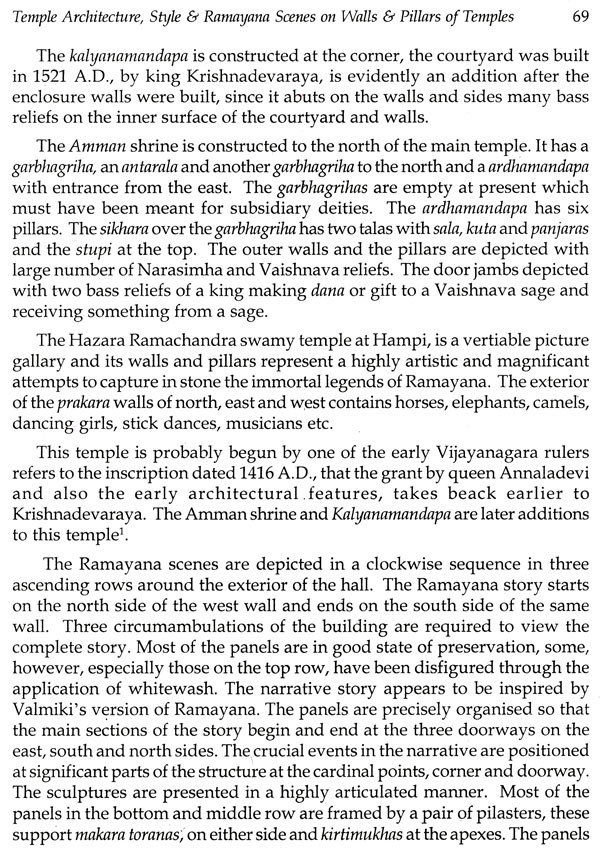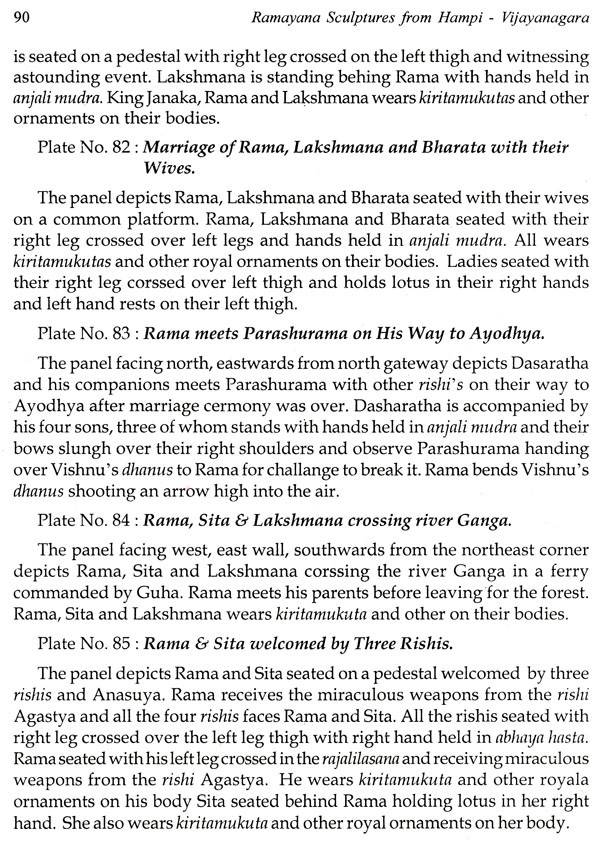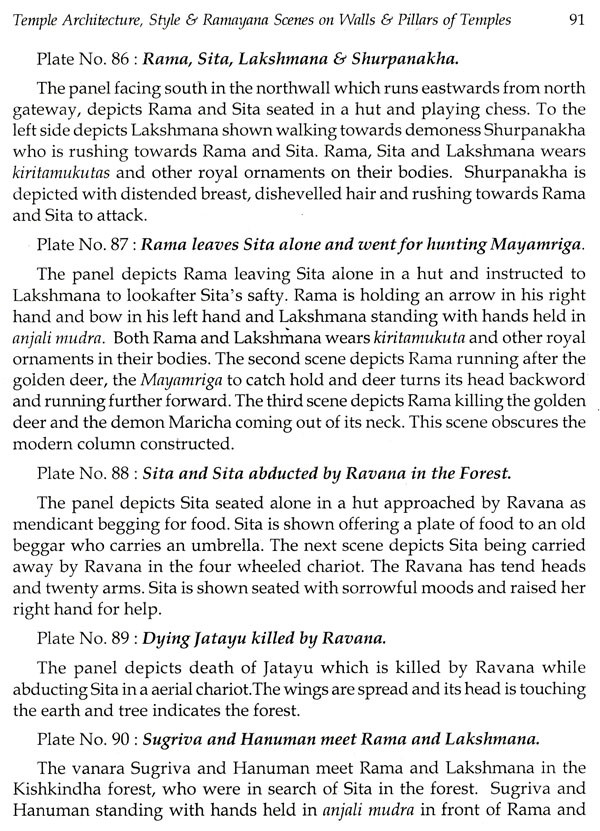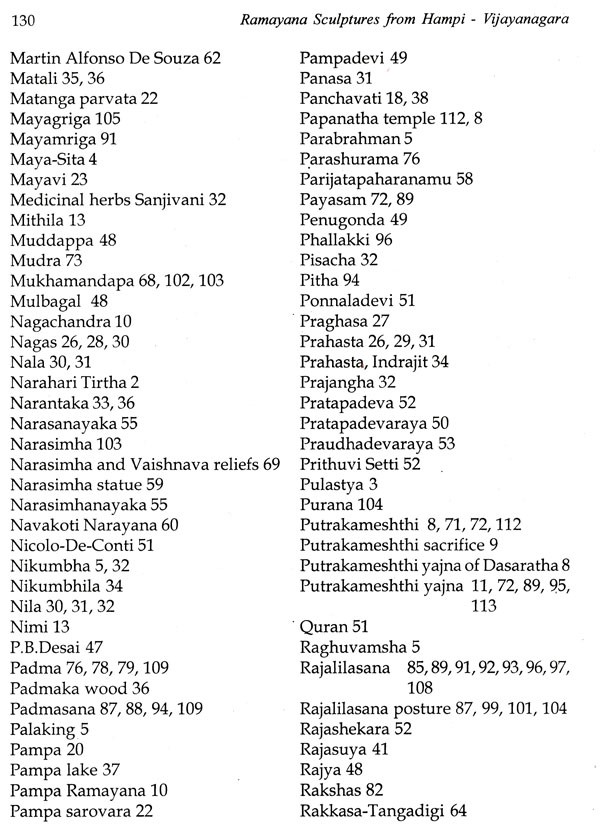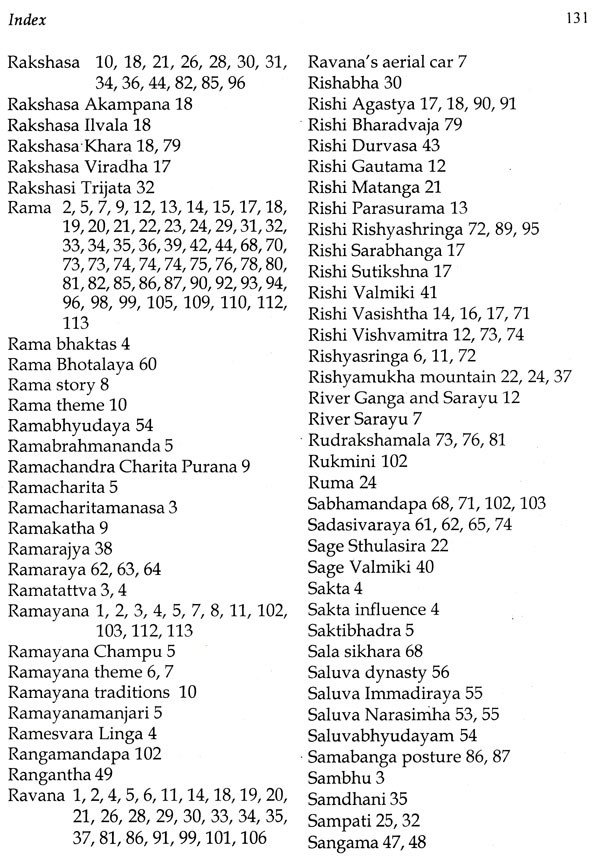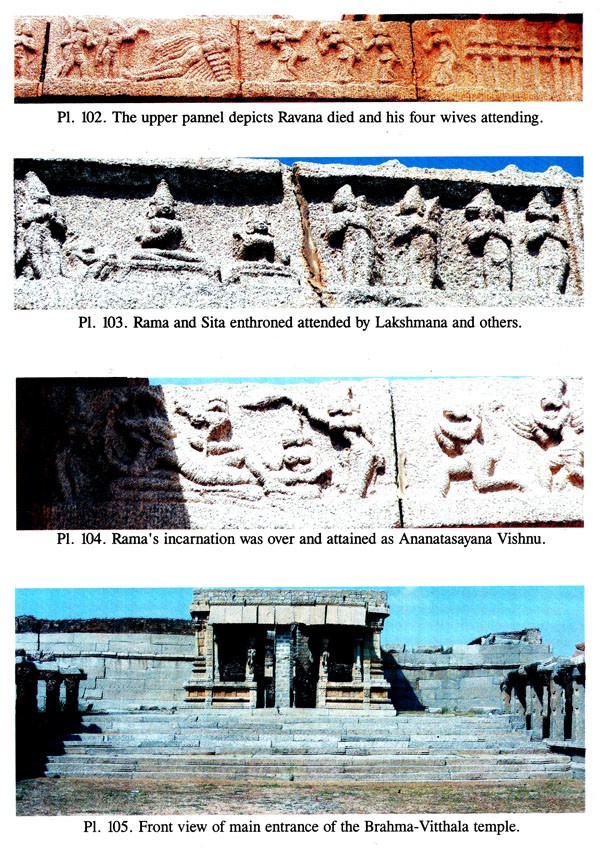
Ramayana Sculptures from Hampi Vijayanagara
Book Specification
| Item Code: | UAP663 |
| Author: | K.M. Suresh |
| Publisher: | Bharatiya Kala Prakashan |
| Language: | English |
| Edition: | 2009 |
| Pages: | 134 (With Color Illustrations) |
| Cover: | HARDCOVER |
| Other Details | 10.00 X 7.50 inch |
| Weight | 730 gm |
Book Description
The Ramayana is one of the two great epics of India and its influence on the life of Indian people has been great and immeasurable. The ideals of the Ramayana have gone deep into the core of Indian life and have largely moulded its social, political and cultural fabric and eternal history of India. Rama is an ideal hero and the Ramayana describes his character unparalleled in human history.
During Vijayanagara period many poets ad scholars translated the Ramayana in Kannada language. The most important work in Kannada on Ramayana theme is the Ramakatha of Narahari, datable to circa 1580 1600, based upon the Valmiki's Ramayana. He lived in the village temples at Pattadakal.
Dr. K.M. Suresh (Born 1952) former Registrar and presently working as Director (Museum) in the Kannada University, Hampi in Karnataka, obtained his M.A., from Karnataka University, Dharwar in 1974 and P.G. Diploma in Archaeology from Institute of Archaeology, Archaeological Survey of India, New Delhi in 1986. He obtained Ph.D., Degree from Utkal University, Bhubaneswar, Orissa in 1992 on "Sculptural Art of Hampi Vijayanagara".
Since his inception in the Archaeological Survey of India from 1976 to 1996, he served in various capacities in the Archaeological Museums at Bijapur, Hampi, Aihole and Badami in Karnataka and Khajuraho in Madhya Pradesh. He has been active field worker and excavator in the Excavations Branch IV of Archaeological Survey of India, Bhubaneswar in Orissa.
**Contents and Sample Pages**
